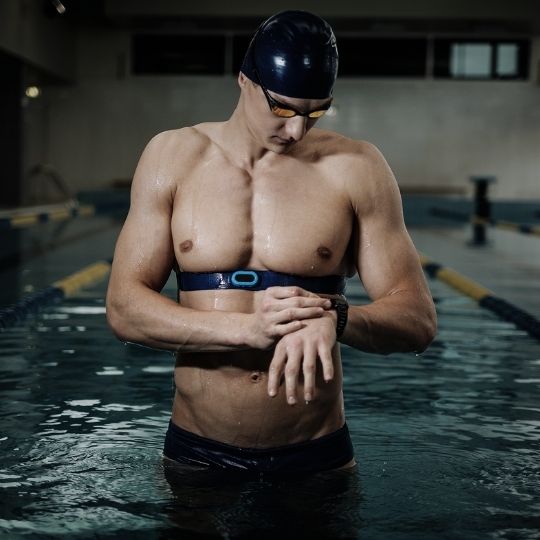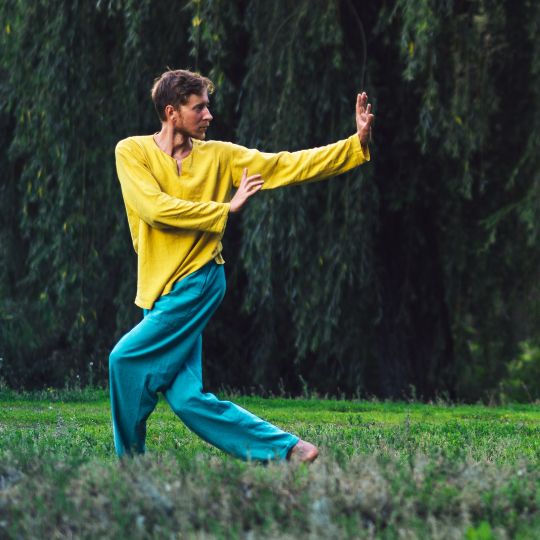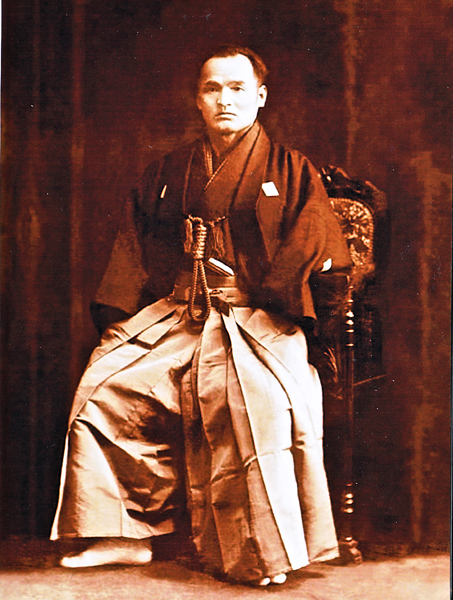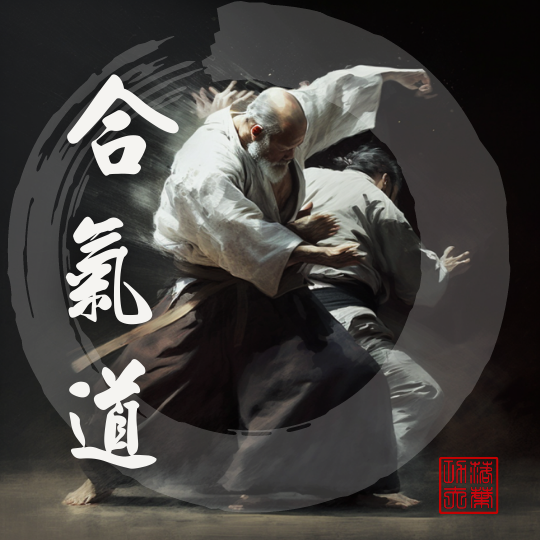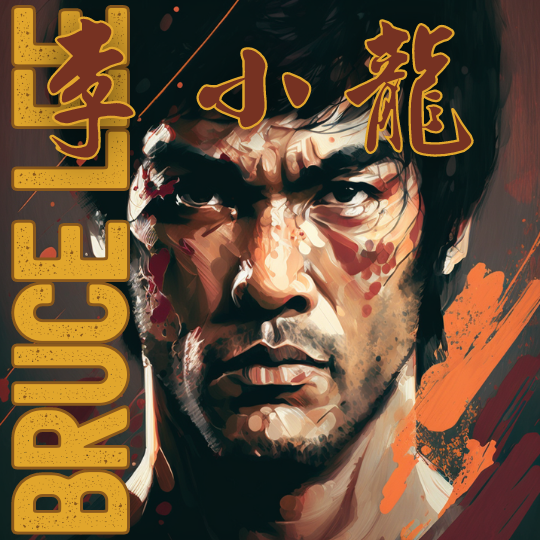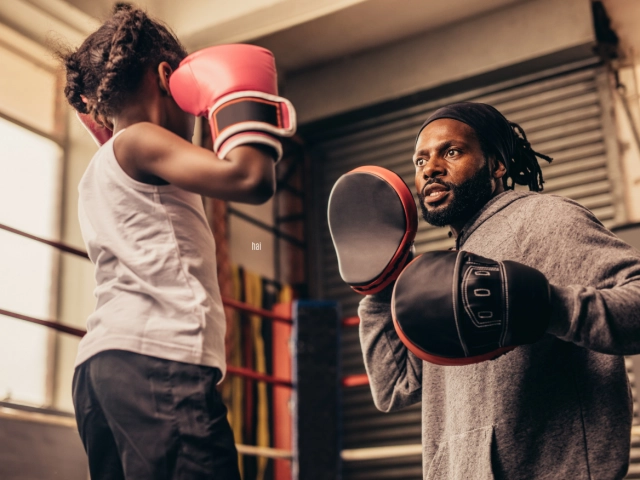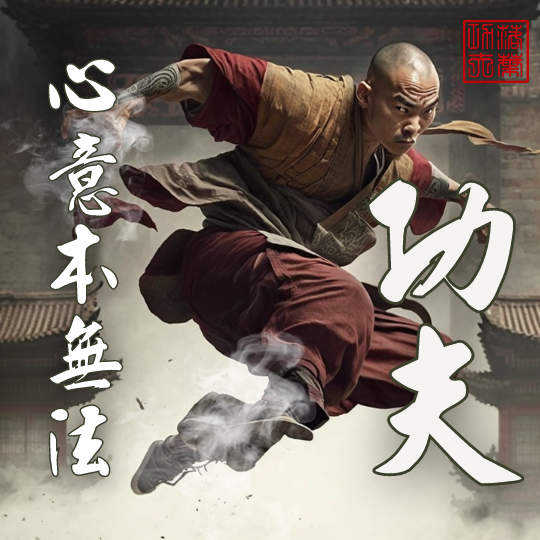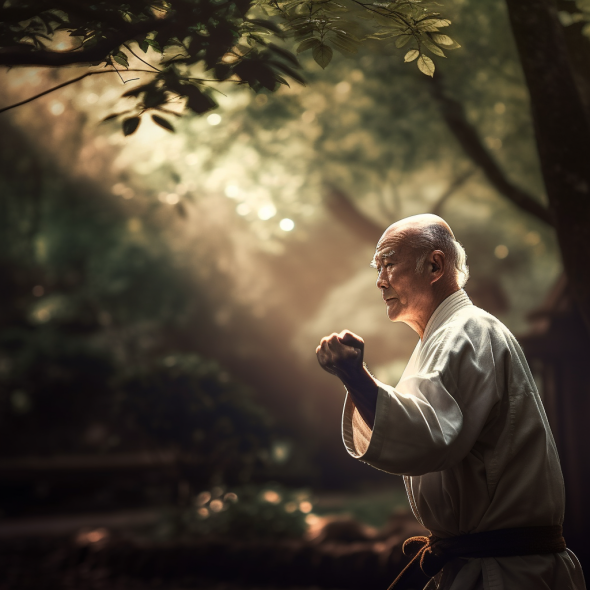
The Art of the Empty Hand
Karate is a popular martial art that has captured the hearts of millions worldwide. Its journey from Okinawa to the global stage has been exciting, with the art making its debut at the karate Olympics in 2020.

This ancient practice has also gained immense popularity in pop culture, thanks to iconic movies like the Karate Kid franchise, which inspired a whole new generation of martial arts enthusiasts, including me!
As a kid, I grew up without my dad, so the story of Daniel-san and Mr. Miyagi grabbed hold of my heart. Although I eventually pursued the Chinese martial art of I Liq Chuan, The Karate Kid played a huge role in my desire to learn martial arts. This article will take you on a whirlwind tour of karate’s history, styles, training methods, and relevance in the modern world.
Where Karate Originated
Karate originated in Okinawa, an island in Japan heavily influenced by Chinese martial arts. Karate was believed to be born out of the fusion between native Okinawan fighting arts and the Chinese Fukien White Crane style.
Fukien White Crane, a dance of elegance, weaves winding, coiling movements with explosive strikes. Emulating the white crane’s grace, practitioners flow effortlessly, harmonizing mind, body, and spirit. In this poetic dance, softness meets power, unveiling the art’s mesmerizing beauty and deadly prowess. (If you’re interested in learning more about the origins of kung fu, check out our article on that topic or read my article comparing Karate to Kung Fu here!)
When Karate Was Invented: A Martial Art Born of Necessity
It’s hard to pinpoint exactly when karate was invented, as it evolved gradually over several centuries. However, Okinawa’s turbulent history and the need for self-defense among its people led to the development of this unique martial art.
Okinawa, a small island in the Pacific, has a rich history of martial arts that dates back centuries. This island has faced much oppression, including the brutal control of the Japanese Shogun, resulting in the prohibition of weapons. This forced the Okinawans to develop their own fighting techniques, resulting in karate’s birth. Through karate, Okinawa found a way to defend itself. Through the centuries, karate has become an integral part of their culture and identity, embodying the spirit of resilience and determination of its people.
Karate Training Methods
Kihon: The Basics
Kihon, the foundation of karate, is more than just basic techniques. It is the building block of any art, the essence of the practice. It represents the very fundamentals of movement, and it holds the key to growth and development as martial artists. Kihon demands complete focus and dedication, forcing one to master the basics before moving on to more advanced techniques. It is a humbling reminder that even the most advanced techniques are built upon a solid foundation of discipline and hard work. Kihon is the bedrock of karate, the soul of the practice, and the key to success.
The Flow of Kata: Karate’s Fighting Patterns
Kata is not just a series of choreographed movements; it is a window into the very heart of karate. The kata sequences contain fundamental movement patterns of attack and defense, representing the very essence of karate practice. Each movement is infused with a deep sense of purpose and meaning, representing the culmination of centuries of martial arts tradition. Like kihon, kata demands complete attention, forcing one to focus on the present moment to hone movement to perfection. In kata, one discovers the beauty and power of karate, connecting with the soul of the art.
The Challenge of Kumite:
Kumite, the sparring aspect of karate, is a dynamic and exhilarating experience that requires intense focus, precision, and timing. It involves two (or more) practitioners engaging in mutual combat, using their techniques to test their skills and abilities. Kumite demands physical strength, agility, mental toughness, and strategic thinking. It is a reflection of the practitioner’s training, allowing them to put their skills to the test in a controlled environment. Through kumite, the practitioner can gain a deeper understanding of their art and develop the discipline and determination required to excel in their training.
Karate Training Tools: Makiwara and Nigiri Game
Makiwara
The makiwara is a traditional Okinawan training tool to develop punching power and technique. It consists of a padded wooden board mounted on a post, which karate practitioners repeatedly strike to condition their knuckles, wrists, and fists. The makiwara is designed to provide resistance and feedback, helping to improve striking accuracy and power.

Nigiri Game
The Nigiri Game is another traditional Okinawan training tool consisting of two large, heavy jars with narrow openings. Karate practitioners grip these jars to develop grip strength, forearm power, and wrist stability, which are crucial for effective striking and grappling.

Kobudo: Karate with Weapons
Kobudo, the practice of traditional Okinawan weapons, is often associated with karate, though it is a separate discipline. Many karate schools also teach kobudo as part of their curriculum. Some of the most common weapons used in Kobudo include the bo (staff), sai (forked truncheon), tonfa (handled baton), and nunchaku (linked sticks). Learning kobudo helps karate practitioners enhance their understanding of body mechanics, distance, and timing, which are crucial in unarmed combat.
Exploring Different Karate Styles
Shotokan Karate
Shotokan, the embodiment of the spirit of karate, is a martial arts style developed by Gichin Funakoshi and his son, Gigo Funakoshi. As a pioneer in popularizing “karate-do,” Gichin’s legacy is honored by the countless students who continue to train in his footsteps. Shotokan’s principles are rooted in the ancient art of karate, reflecting values of discipline, respect, and compassion. Through kata and kumite, Shotokan emphasizes the importance of mastering the fundamentals before advancing to more complex techniques.

The philosophy of Shotokan rests on the foundation of the Twenty Precepts of Karate, which emphasizes the importance of cultivating one’s character. Shotokan is more than just a style; it is a way of life that reflects each practitioner’s dedication, perseverance, and indomitable spirit.
Kyokushin Karate
Masutatsu Oyama’s Kyokushin Karate is a force to be reckoned with, embodying the spirit of discipline, strength, and determination. Oyama’s vision was to create a style of karate that would focus on direct hits to the opponent’s body with thrusts or kicks, deviating from other traditional schools of karate. With a dedicated group of teachers, Oyama’s organization grew, and they demonstrated his karate worldwide. Oyama hand-picked instructors who could market the style and gain new members, spreading Kyokushin throughout the globe.
Masutatsu Oyama, the founder of Kyokushin Karate, was an unstoppable force. He was famous for his incredible fighting abilities, honed through his legendary fights with bulls. These were no ordinary fights; Oyama would take on the bull with his bare hands, demonstrating his strength and skill in the most incredible ways.

Kyokushin Karate is also famous for its 100-man kumite, a grueling test of strength, endurance, and willpower. The kumite tests the practitioner’s ability to withstand intense physical and mental strain, pushing them to their absolute limits. Each fighter must take on 100 opponents in succession, each one challenging the fighter’s stamina, technique, and resolve. This is not a test for the faint of heart; it requires incredible dedication, discipline, and courage to complete. But for those who do, the reward is immense, as they emerge from the experience with a renewed sense of purpose and a deep understanding of their inner strength. The 100-man kumite is a true test of the practitioner’s spirit and a testament to the power of Kyokushin Karate to transform and inspire.
Goju-Ryu
Gōjū-ryū, the “hard-soft style” of Okinawan karate, blends the principles of hard and soft techniques from the Bubishi, the ancient martial arts book used by Okinawan masters. Gō refers to closed-hand techniques or straight linear attacks, while jū refers to open-hand techniques and circular movements. Gōjū-ryū incorporates both circular and linear movements, combining hard striking attacks with softer open-hand circular techniques for attacking, blocking, and controlling the opponent. Breathing correctly is essential, especially in the Sanchin and Tensho katas, which are core components of the style.
Gōjū-ryū originated from the teachings of Higaonna Kanryō, who integrated gō-no and jū-no kenpō into one system. His style became known as Naha-te, which included other earlier teachers such as Arakaki Seisho and the Kojo family style. However, Japan’s annexation of Okinawa and its defeat of China in the Sino-Japanese War led to the loss of the older schools of Naha-te.
Chōjun Miyagi was Kanryō’s most prominent student, who introduced Tensho, adapted from Rokkishu of Fujian White Crane, and formulated the Gōjū-ryū style, which emphasizes training for self-defense and cultivating intellect before strength. In addition, Miyagi believed karate-do should build character, conquer human misery, and find spiritual freedom. His philosophy of integrating hard and soft styles permeates the practice of Gōjū-ryū, both in karate and life.

Karate FAQ
What Is A Karate Uniform Called?
The karate uniform is called a Keikogi (稽古着). It is also known as dōgi (道着) or keikoi (稽古衣), or just gi for short. The design varies depending on the style and origin. Okinawan gis tend to be lighter and more breathable, while Japanese gis are heavier and stiffer. Judo and Brazilian Jiu-Jitsu gis are typically thicker and more durable, yet due to the nature of their respective sports, which involve more grappling and ground techniques that specifically use the gi. The Kung Fu style called Shuai Jiao also focuses heavily on “jacket wrestling” and uses a special top called the xiongpi 雄皮, or “hero skin.”
The gi holds the essence of discipline, respect, and tradition deeply ingrained in the martial arts culture. Wearing a uniform is more than just donning an outfit; it symbolizes discipline, readiness, and respect. Compliance with uniform standards goes beyond personal appearance; it reflects the values and principles we hold dear. In martial arts, it is a testament to our commitment to training, our willingness to learn, and our dedication to our art. The uniform is a unifying force that brings us together, forging a bond that transcends individual differences and strengthens our collective identity. It is a visual representation of the unity and cohesion that is the hallmark of martial arts training.
What Karate Belts Are There?
Traditionally, karate had no belts. Jigoro Kano, the founder of judo, contributed to the concept of kyu and dan ranks, which represent levels of expertise. The introduction of the belt system we know today followed, with the most common karate belt order in the US progressing as white, yellow, green, purple, blue, brown, and black.
Can Karate Be Self-Taught?
While self-directed learners can progress in martial arts, a highly qualified instructor can shorten the learning curve and spot weaknesses and mistakes. It’s always better to learn from a knowledgeable teacher who can guide you through the complexities of the art. In the 21st century, various online programs are now available for those who might not be able to get to a dojo regularly. We have a full article about the pros and cons of learning martial arts at home and online if you want to read more about this topic.
Can Karate Be Used For Self-Defense?
Karate can be an effective means of self-defense, especially for those who follow the Matrix of training. This sequence consists of 1. Remedial exercises, 2. Rehearsed drills, 3. Reactive drills, and 4. Resistance partner training (i.e., sparring). In particular, Kyokushin karate produces effective fighters who are well-conditioned for contact, making it a strong choice for self-defense.
Can Karate Beat Boxing?
Whether karate can beat boxing depends on the individual practitioner and their adherence to the Matrix of training. Boxers have an advantage in footwork and striking, as they specialize in those techniques and focus on targeting the head and face. On the other hand, karate practitioners have an advantage in leg kicks, sweeps, throws, and a more diverse arsenal of techniques.
Why Karate Doesn’t Work In MMA
Some argue that karate doesn’t work in MMA, but exceptions exist. For example, Lyoto Machida, a former UFC champion, successfully employed his karate skills in MMA. However, he also emphasized that adapting traditional karate techniques to meet the demands of the sport is necessary.
Karate Today: A Living Tradition
Amidst the backdrop of the 21st Century, karate still stands as a testament to the indomitable spirit of resilience and determination that lies deep within us all. A dance of grace and power, it weaves an intricate story of courage and wisdom, a living legacy that transcends the boundaries of its homeland. Born from the crucible of oppression, karate emerged as a beacon of hope, an embodiment of the human spirit’s ability to overcome adversity and rise above the challenges that life presents.
Through the elegant interplay of kata and kumite, practitioners of this ancient art form find stillness and strength in the harmonious union of mind, body, and spirit. Students are guided by the wisdom of the Old Masters; their teachings are etched into the very fabric of the art of the empty hand.
So let us honor the spirit of karate, for in the pursuit of mastery, we are all united in our quest for self-discovery, growth, and the pursuit of a life lived as the best version of ourselves. In the art of karate, we find not only a means of self-defense but a profound reflection of the human spirit and a celebration of the discipline and strength that lies within us all.

Read More!
- Why Hand-to-Hand Combat Still Matters in the Firearm Era
- What is a Kung Fu Master Called?
- Woman Fight’s Off Her Attacker At The Gym!
- Bruce Lee’s Real Fights: The True Stories Behind the Legend
About the Author

Ashe Higgs, I Liq Chuan Master Instructor & L2 Nutrition Coach
Ashe is a highly skilled martial arts instructor and certified nutrition coach with over two decades of experience in the field. He holds a Master Instructor certification in I Liq Chuan under Sam FS Chin, making him one of only several individuals worldwide to hold the title. He has taught classes and workshops worldwide and is passionate about helping others achieve their fitness and wellness goals.
With a background in full-contact fighting and a Level 2 certification from Precision Nutrition in nutrition coaching, Ashe is a well-rounded expert in the fields of martial arts. In addition to his expertise, he has a wealth of experience in teaching and mentoring others. He has a natural ability to connect with his students and inspire them to reach their full potential.
Disclaimers & Conflicts of Interest
I am not a doctor, and the information provided should not be considered medical advice. The information provided is for educational and informational purposes only and should not be used as a substitute for professional medical advice, diagnosis, or treatment. Consult your doctor or a qualified healthcare professional before making any changes to your diet, exercise routine, or lifestyle.
Please note that some of the links provided in this content may be affiliate links, meaning that I may receive a small commission if you purchase through them. However, please rest assured that any products or services recommended are based on my personal experience and belief in their value. I only recommend products or services that I have personally used and believe in.






